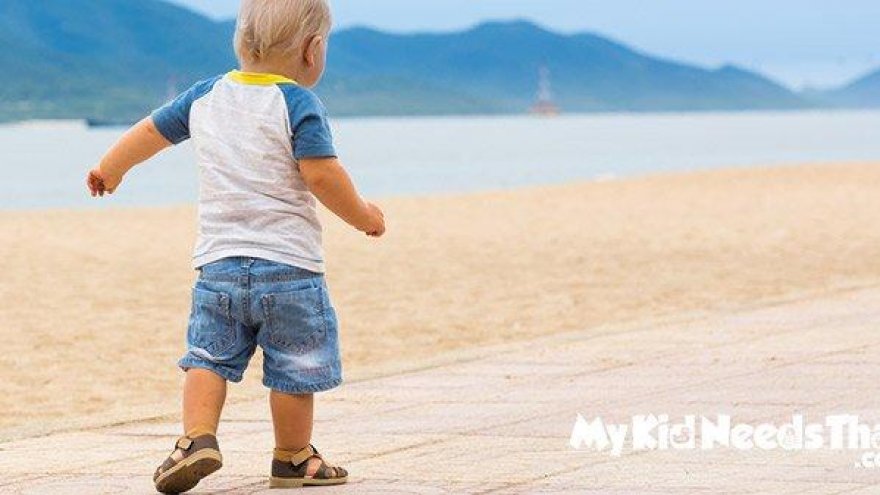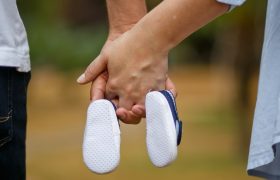When Do Babies Start Walking Fully Reviewed

A baby’s first independent step is one of the most exciting moments for any parent because it represents a huge transition from being a newborn to being a toddler. While every child is different, you can learn about the stages that will lead your little one to this unforgettable milestone.
How Babies Learn How to Walk
Your newborn is actually born with a reflex to stand and move his or her legs, like walking. Your baby’s legs are still not strong enough to support the whole body though, but if you hold him or her upright, you will notice that the feet will push against any flat surface. However, this will only happen in the first couple of months.
At 6 months old, the legs start to become stronger and when you balance your baby on his or her feet, the little one will bounce up and down. This activity will also strengthen the leg muscles as preparation for walking. However, your child will still need to master other skills, from rolling over to sitting and crawling.
At around 9 months, you can see your child pulling him or herself up and stand supported by any piece of furniture. You can help your baby practice by helping him or her up beside the sofa, a good place to hang on while standing. Soon after, the little one will learn how to bend the knees. By accident, he or she will also stumble on sitting down from a standing position.
By the time the first birthday comes up, the baby will try cruising, which means walking with the support of different pieces of furniture. Sometimes, the little one may even be able to stand without any help. Another skill learned at this time is squatting and stooping. This means, he or she can grab a toy even while standing up. Your baby may even be able to take a few steps while holding your hand, though independent walking is still a few weeks away. At this point, children walk on tiptoe still, their feet outward-facing.
Soon after the first birthday, our toddler might be walking alone already, although these steps will still be tentative and unsteady. By 14 to 15 months, the wobbliness will be gone, and your baby is now able to walk well and without support. However, it is normal to see toddlers who take a few more weeks before they can do this.
Don’t look away though, because it may happen quickly and without any warning. Your baby learns balance through practice and slowly will also gain enough confidence to try it alone. One second, you might see the little one just standing unsure by the couch and then the next, the little one will be making some tentative steps towards you.
How to Support Your Baby
Walking is one of the skills your baby will learn to finally be independent. It truly represents a shift from being immobile to being able to explore the world on his or her own. But this is not something that happens without a lot of help from the parents.
-
Show the Baby How
It is easy to come and do everything for your baby, but this is not the best solution. When your baby is crying, you can come and help, but use this situation as a learning experience for the little one. So when he or she cannot sit down alone from standing, you can teach the little one by bending the knees. By showing the baby how to do it, he or she will be able to try it out.
-
Motivate
Your baby might end up taking the first steps to try to get to you. You can leave him or her holding on to a couch, then wait a couple of steps away. Even if the baby didn’t make it the first few tries, motivate by praising the efforts.
-
Make It Conducive for Walking
As your child tries walking, it can be dangerous at times. Be sure to childproof to be sure that he or she is not hitting the head or getting injured while practicing. This might scare them into not trying again. Identify a space where he or she can practice, and do not leave your baby alone as much as possible.
-
Use the Right Help
Once popular in helping little ones walk, baby walkers are now quite discouraged. These do help children get around quickly but they do not allow the upper leg muscles to develop fully. Because kids are more mobile, the risk of grabbing dangerous items or getting into hazard-filled rooms is higher.
Instead, purchase a toy that he or she can push and hold on to while trying to walk. It can be a truck or a cart, just make sure that it is stable and has a wide base to provide enough support.
Another thing you can do away with is baby shoes. Though fashionable, they may make it more difficult for your child to perfect his or her balance and coordination. Unless they are walking on rough surfaces, they can just remain barefoot.
Conclusion
Walking is just the first step towards being fully mobile. Your baby will only actually start to master standing at 14 months and walking by 15. Afterward, walking up and down the stairs comes next. Your child will soon enough be climbing and kicking too, plus may even attempt to dance to music.
Jumping comes after the 2nd birthday, and slowly, all these movements that adults can do well will also be mastered. Soon enough, you will be out of breath running after your baby or trying to figure out where he or she has run off to.
While it seems easy and though these movements may be reflexive to your little one, he or she will not be able to make it without your help. Much like other skills, you need to show the way and be there to practice these new skills over and over again. Enjoy it while the baby is still small and dependent because soon these days will be over.







